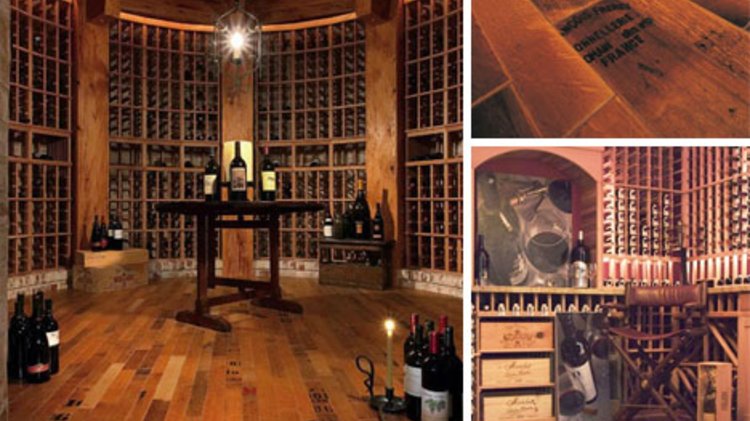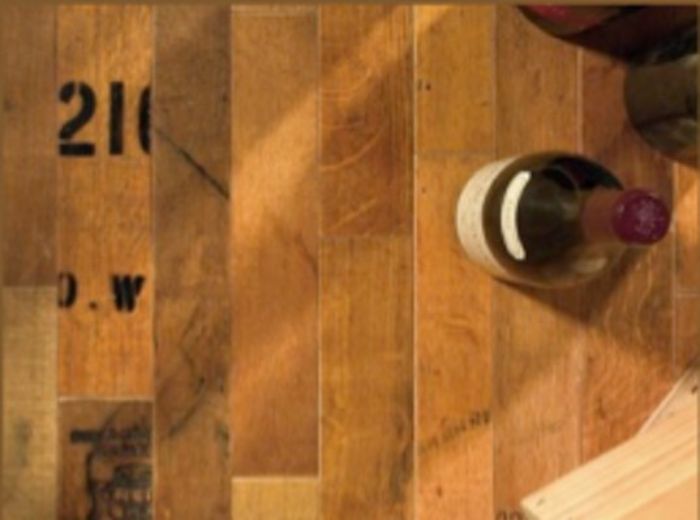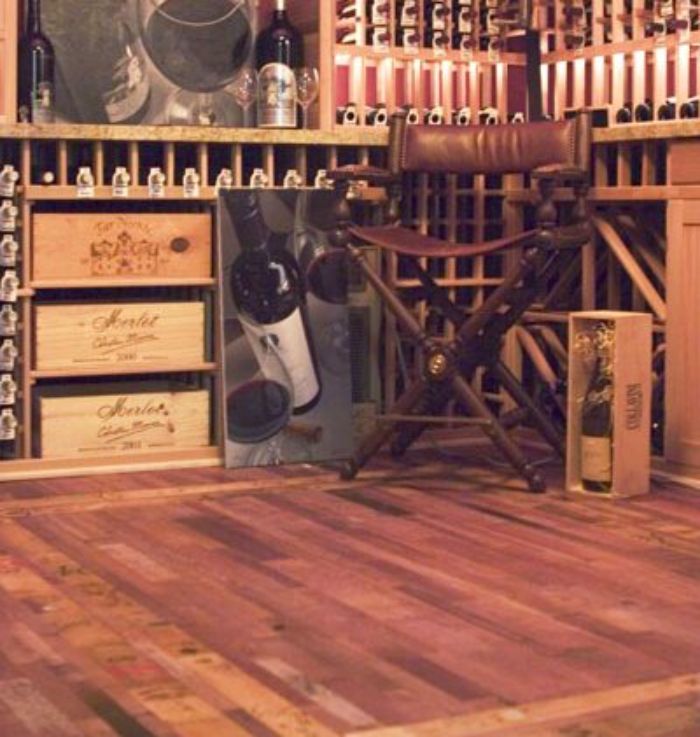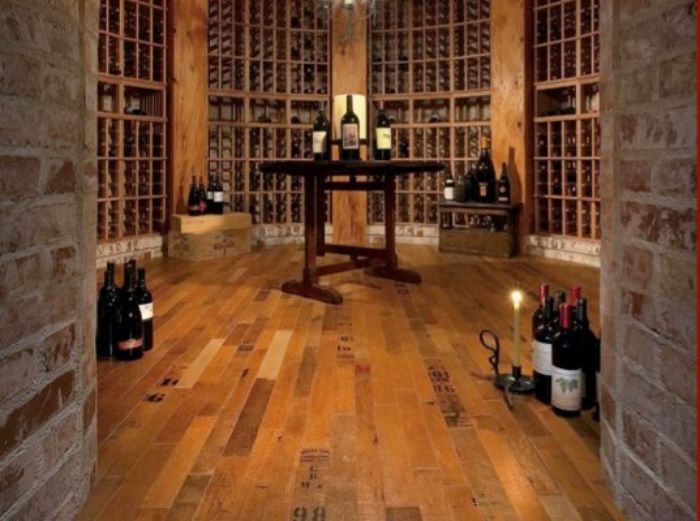Better with Time: Beautiful Aged Wine Barrel Wood Flooring

Ever wonder what happens to wine barrels when a vintage is ready to be bottled? As it turns out, recycling them for the next round of wine is not a preferred practice by serious wine-makers as the old flavors might taint the new grapes. These wine barrel wood floors are certainly more unique than anything you’ll find at your local flooring retailer.
Making Use of a Beautiful Waste Material

While the industry works on ways to better reuse barrels in the same way (by fulling purging remnant wine, for example) the door is open to folks who would like to buy used barrels on the cheap, strip them down, flatten them out and use them to build some age and personality into home hardwood floors that can be hard to do using typical (most costly) architectural salvage.

With respect to Fontenay – one company making its way in the business of wine barrel recycling – the various parts of the barrel are arranged into various second-hand hardwood collections stylistically dependent on their source and nature. These are mostly presented individually, but also with a few compelling pictures of combinations – using one kind boxed in or trimmed by another.
A Rich and Unique Look

“Flooring in the Vintage Barrel collection is made with wood reclaimed from old wine barrels. The line includes Cooperage (shown), which features markings from barrel heads; Wine Infusion, with wood from the inside of the barrel and boasting the rich color of wine staining; and Stave, the outer wood material that sports the markings of the barrels’ hoops.”

Some of the sets show off the stamps and markings of their maker, black-stenciled block print that add character(s) into the mix. Others feature in the wine-soaked inner sides of the barrels, stained different colors and tones naturally in the wine-production process.
Still others show off odds and ends of the barrels – smaller and uniquely-shaped remnants from outside of the main wrap-around barrel section. And why limit it to wines? Scotch casks would work as well, and might have a fascinating aroma to boot – though modern metal beer barrels could be a tough sell (perhaps they could be used as siding or roofing instead).




